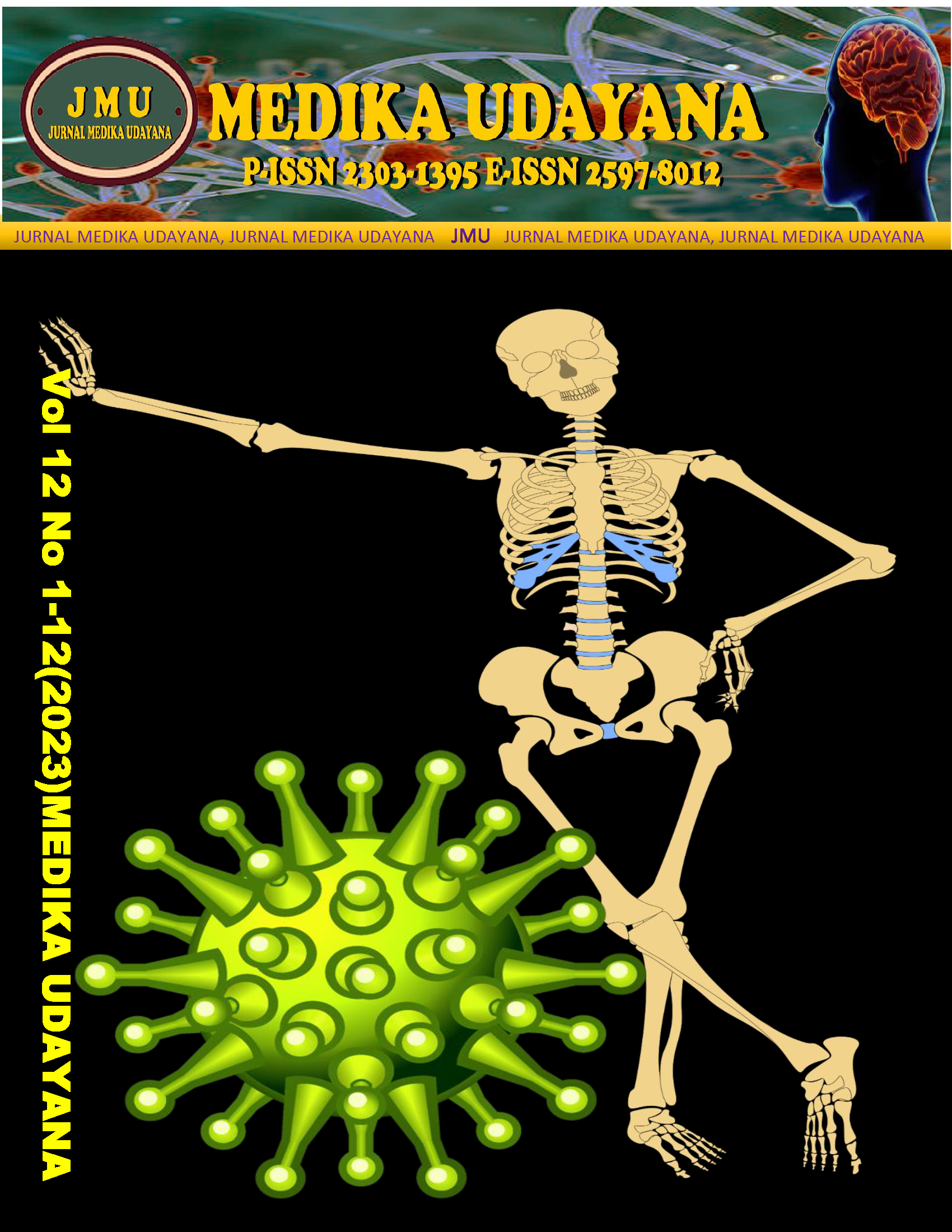Characteristic of Cervical Cancer Patients Who Had Undergone Radical Hysterectomy and Bilateral Pelvic Lymphadenectomy in Sanglah Hospital from 2018-2019
Abstract
Cervical cancer is an over or uncontrolled cell growth in the cervix, mainly caused by infection with HPV types 16 and 18. Some prognostic and predictive factors already established to determine the future therapeutic outcomes. Common treatments for early stage cervical cancer are radical hysterectomy and pelvic lymphadenectomy. This study aims to know the characteristic description of cervical cancer patients who had undergone radical hysterectomy and bilateral pelvic lymphadenectomy in Sanglah Hospital from 2018-2019. Samples were chosen from a list of inclusion and exclusion criteria. Data analysis was conducted using the software SPSS ver. 26 to obtain the characteristics of the cervical cancer case that had radical hysterectomy and bilateral pelvic lymphadenectomy based on age, parity, tumor size, clinical stage, histopathological profile which includes histopathological type, degree of differentiation, LVSI, incision margin, parametrial invasion, and pelvic lymph node metastasis. Result shows that cervical cancer patients that had radical hysterectomy and bilateral pelvic lymphadenectomy in Sanglah Hospital, Denpasar, Bali from 2018-2019 are 50.9% from the age group 46-55 years old, 69.8% with multiparity (2-4 children), 69.8% were found with tumor <4cm, and 35.8% were found with stage IIB cancer. The most common histopathological type was squamous cell carcinoma (47.2%). Vaginal incision margins and parametrial invasion were generally negative, 73.6% and 86.8%. Pelvic lymph node metastases were also mostly negative (77.4%). Most of the data on the degree of differentiation and LVSI were not listed (92.6% and 50.9%). There was no significant relationship between age, parity, tumor size, clinical stage, histopathological type, and pelvic lymph node metastases.











